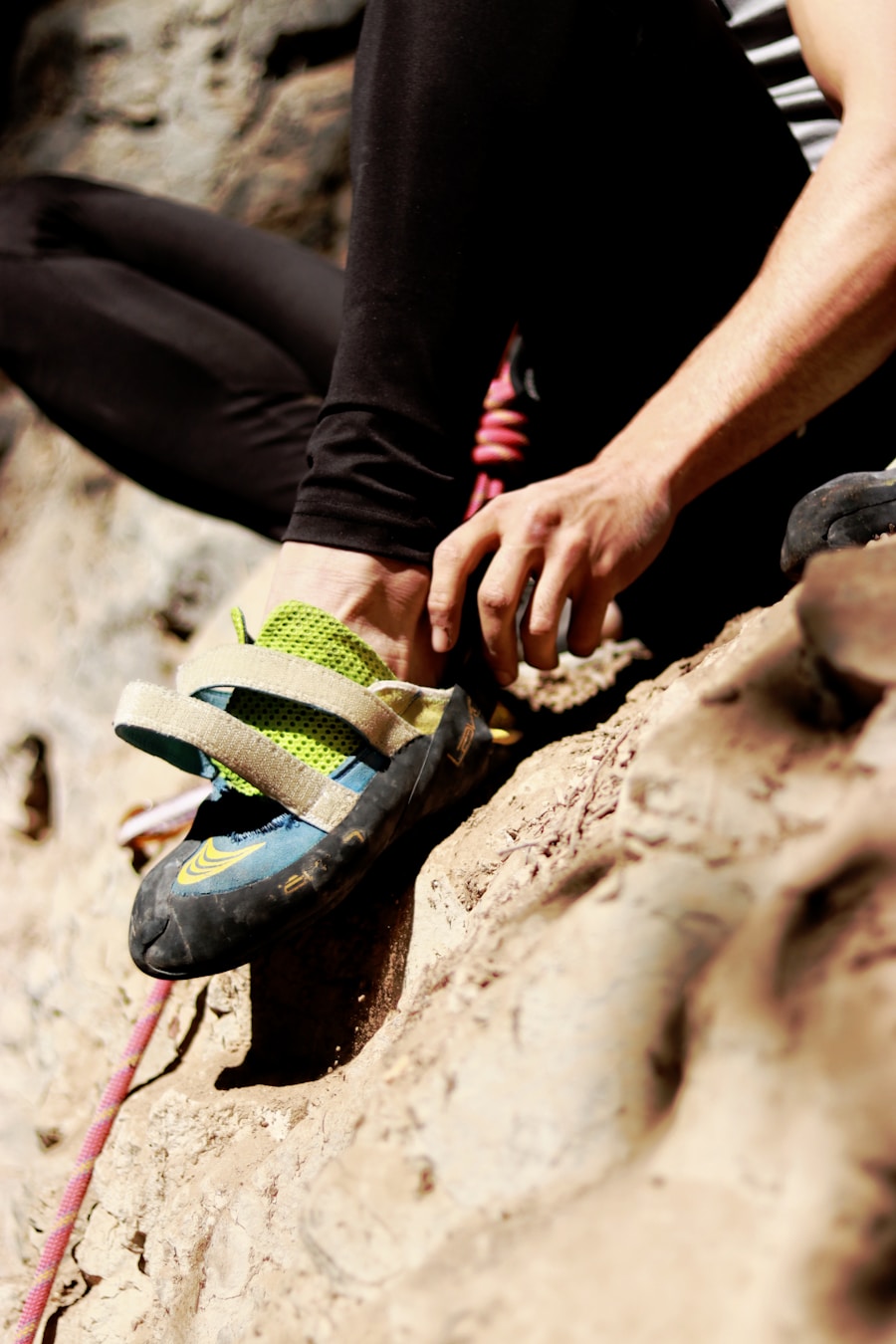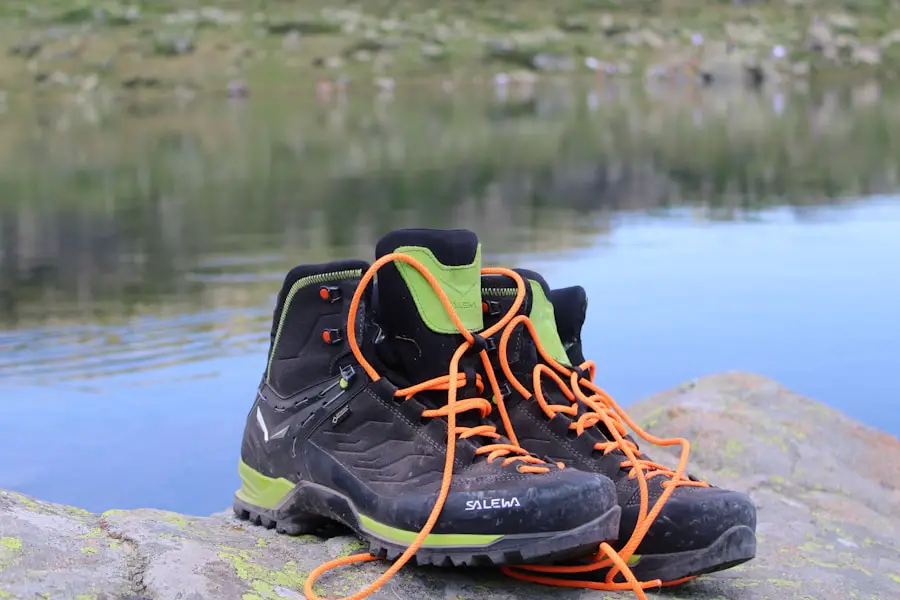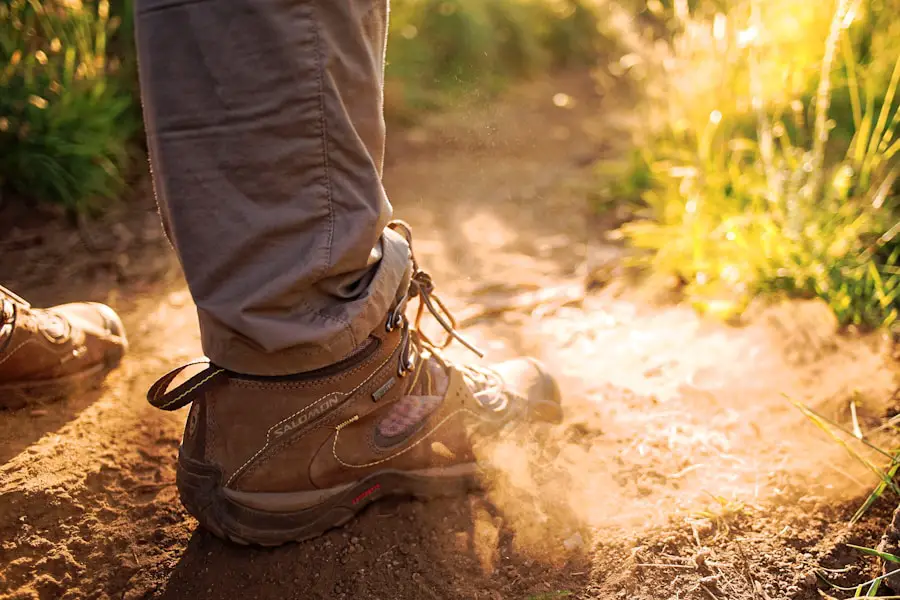Selecting the appropriate footwear is paramount for anyone who spends extended periods on their feet, whether for work, leisure, or athletic pursuits. The right shoes can significantly influence comfort, performance, and overall foot health. When considering footwear, it is essential to evaluate the specific activities you will engage in.
For instance, running shoes are designed with cushioning and support tailored for forward motion, while hiking boots offer stability and traction on uneven terrain. Each type of shoe serves a distinct purpose, and understanding these differences can help prevent discomfort and injuries. Moreover, fit is a critical factor in choosing the right footwear.
Shoes that are too tight can lead to blisters, calluses, and other foot ailments, while overly loose shoes may cause instability and increase the risk of sprains. It is advisable to try on shoes later in the day when your feet are slightly swollen, as this will provide a more accurate representation of how they will feel during prolonged wear. Additionally, consider the width of your foot; many brands offer various widths to accommodate different foot shapes.
A well-fitted shoe should allow for a thumb’s width of space between your longest toe and the end of the shoe, ensuring that your toes have room to move without being cramped.
Key Takeaways
- Choose footwear that is appropriate for the activity and provides proper support
- Select socks made of moisture-wicking material to prevent blisters and discomfort
- Break in new shoes gradually to avoid painful rubbing and blisters
- Keep your feet dry to prevent blisters and fungal infections
- Use moleskin or blister pads to protect areas prone to rubbing and irritation
Socks Matter
While shoes often take center stage in discussions about foot comfort, the importance of socks should not be underestimated. The right pair of socks can enhance the fit of your shoes and provide additional cushioning and moisture-wicking properties. When selecting socks, consider the material; synthetic fibers like polyester or nylon are excellent for moisture management, while merino wool offers natural temperature regulation and odor resistance.
Cotton socks, although comfortable, tend to retain moisture, which can lead to blisters and discomfort during extended wear. In addition to material, the thickness of the sock can also impact comfort. Thicker socks may provide extra cushioning but can also make shoes feel tighter, potentially leading to discomfort.
Conversely, thinner socks may allow for a more precise fit but might not offer enough padding for long walks or runs. It is often beneficial to experiment with different sock types to find the perfect balance between comfort and fit. For those engaging in high-impact activities, consider investing in specialized athletic socks designed with additional support and cushioning in key areas.
Break in New Shoes

New shoes can be a double-edged sword; while they may look stylish and offer the latest technology, they often require a breaking-in period before they become truly comfortable. Wearing new shoes for extended periods right out of the box can lead to blisters and soreness. To mitigate this risk, it is advisable to gradually introduce new footwear into your routine.
Start by wearing them for short periods around the house or during low-impact activities. This allows your feet to adjust to the shoe’s structure without overwhelming them. The breaking-in process can vary depending on the type of shoe.
For instance, leather shoes may require more time to soften and mold to your feet compared to synthetic materials that may feel comfortable from the start. Pay attention to any areas that feel particularly tight or uncomfortable; these spots may need additional attention or adjustments. If discomfort persists after several wears, it may be worth consulting a professional cobbler who can stretch or modify the shoe for a better fit.
Keep Your Feet Dry
| Metrics | Data |
|---|---|
| Number of Waterproof Shoes Sold | 5,000 |
| Percentage of Customers Satisfied with Waterproofing | 85% |
| Number of Returns Due to Water Damage | 100 |
| Percentage of Increase in Sales After Waterproofing Campaign | 20% |
Moisture management is crucial for maintaining foot health, especially during activities that involve prolonged standing or walking. Excess moisture can lead to blisters, fungal infections like athlete’s foot, and general discomfort. To keep your feet dry, start with moisture-wicking socks that draw sweat away from your skin.
Look for socks with mesh panels or ventilation zones that enhance breathability. In addition to choosing the right socks, consider the environment in which you will be wearing your shoes. If you anticipate being in wet conditions, waterproof footwear or water-resistant treatments can help keep your feet dry.
For those who tend to sweat excessively, using foot powders or antiperspirants specifically designed for feet can help absorb moisture and reduce friction. Regularly changing socks during long activities can also be beneficial; having a fresh pair on hand can make a significant difference in comfort levels.
Use Moleskin or Blister Pads
Even with careful preparation, blisters can still occur, particularly during high-intensity activities or when breaking in new shoes. To combat this common issue, moleskin and blister pads are invaluable tools in any foot care arsenal. Moleskin is a soft fabric with an adhesive backing that can be cut to size and applied directly over areas prone to friction.
This protective layer helps reduce irritation and provides cushioning against pressure points. Blister pads serve a similar purpose but often come with additional features such as gel cushioning or antimicrobial properties to promote healing. Applying these products at the first sign of discomfort can prevent blisters from forming altogether.
It is essential to keep an eye on any areas that feel tender; addressing them early can save you from more significant issues down the line. Carrying a small first-aid kit with moleskin and blister pads during outdoor activities ensures you are prepared for any foot-related emergencies.
Proper Foot Care

Maintaining proper foot care is essential for overall foot health and comfort. Regularly inspecting your feet for any signs of issues such as cuts, blisters, or fungal infections is crucial. Keeping toenails trimmed and filed helps prevent ingrown nails and reduces the risk of injury when wearing closed-toe shoes.
It is advisable to trim nails straight across rather than rounding the edges to minimize the likelihood of ingrown toenails. Moisturizing your feet is another vital aspect of foot care that is often overlooked. Dry skin can lead to cracking and discomfort, particularly in areas like the heels.
Using a good quality foot cream or lotion can help keep skin supple and hydrated. For those prone to calluses or rough patches, regular exfoliation using a pumice stone or foot scrub can help maintain smooth skin. Additionally, consider giving your feet some time to breathe by going barefoot at home or wearing open-toed sandals when appropriate.
Adjust Your Lacing
The way you lace your shoes can have a significant impact on comfort and support during various activities. Many people default to standard lacing techniques without considering how adjustments can enhance fit and alleviate pressure points. For instance, if you experience discomfort in the top of your foot or around your ankles, experimenting with different lacing patterns may provide relief.
One popular technique is known as “heel lock” lacing, which helps secure the heel in place and prevents slippage during movement. This method involves threading the laces through the top two eyelets in a crisscross pattern before looping them back through the same eyelets again before tying them off. This creates a snug fit around the ankle without compromising overall comfort.
Additionally, if you have high arches or specific foot conditions like bunions, adjusting lacing techniques can help distribute pressure more evenly across your foot.
Pack Smart
When preparing for an outing that involves significant walking or standing, packing smartly can make all the difference in ensuring foot comfort throughout the day. Start by selecting footwear that is appropriate for your planned activities; this means considering factors such as terrain, weather conditions, and duration of wear. If you anticipate needing extra support or comfort during your outing, consider packing an extra pair of insoles designed for arch support or cushioning.
In addition to footwear considerations, packing essential foot care items is crucial for long days on your feet. Items such as blister pads, moleskin, extra pairs of moisture-wicking socks, and even a small tube of foot cream can be lifesavers when discomfort arises. If you know you will be on your feet for extended periods, plan for breaks where you can sit down and give your feet a rest; this will help prevent fatigue and soreness from building up over time.
By taking these steps into account when choosing footwear and preparing for activities that involve significant time on your feet, you can enhance comfort and reduce the risk of injury or discomfort significantly. Prioritizing proper footwear selection, sock choice, foot care practices, and smart packing strategies will contribute to a more enjoyable experience whether you’re hiking through rugged terrain or simply navigating a busy day at work.
If you’re planning a hiking trip, it’s important to take care of your feet to prevent blisters. One helpful article to check out is this one about a scarf with a hidden pocket for travel. This article provides tips on how to pack efficiently and stay organized while on the go, which can be crucial for preventing blisters during long hikes. Remember, proper footwear and foot care are essential for a comfortable and enjoyable hiking experience.
Love travel? Join Our Facebook Community For More Tips.
FAQs
What are blisters and why do they occur while hiking?
Blisters are small pockets of fluid that form on the outer layers of the skin. They occur when there is friction or pressure on the skin, such as from ill-fitting shoes or repetitive rubbing during hiking.
How can I prevent blisters while hiking?
To prevent blisters while hiking, it’s important to wear properly fitting and broken-in hiking boots or shoes. Wearing moisture-wicking socks and using friction-reducing products, such as moleskin or blister pads, can also help prevent blisters.
Are there any specific techniques for lacing hiking boots to prevent blisters?
Yes, there are specific lacing techniques, such as the heel lock or surgeon’s knot, that can help prevent blisters by reducing movement and friction within the shoe.
What should I do if I feel a hot spot or blister forming while hiking?
If you feel a hot spot or blister forming while hiking, it’s important to address it immediately. Stop and apply moleskin or a blister pad to the affected area to reduce friction and protect the skin.
Are there any other tips for preventing blisters while hiking?
Other tips for preventing blisters while hiking include keeping your feet clean and dry, taking regular breaks to air out your feet, and using hiking poles to reduce the strain on your feet.
